Tired But Happy
I am writing this journal at 2 a.m. My face is red and still stings a little from the windy snowmobile ride back from the field camp where I have just spent 15 hours. My research team is hopefully fast asleep in their tents out on the Barwick Valley. They will soon be waking up and breaking down camp. They have spent the day collecting sediment at the remote, highly protected site in the Dry Valleys to get a better understanding of the level of pollutants in the sediment. I said goodbye to them this morning and then joined the SIMPLE team. We both are having lots of adventures!
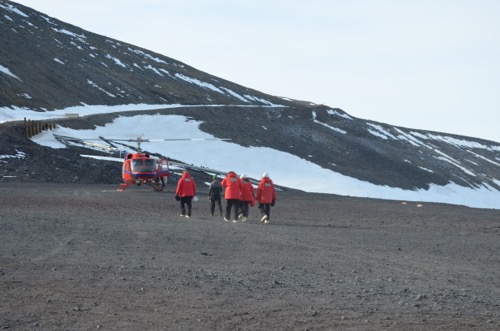
All About SIMPLE
I spent the day with scientists, engineers and support staff from the SIMPLE project. Today the team launched its underwater robot, Artemis, under the sea ice for the first time without tethers. They did this from a field camp that is about 7 kilometers south of McMurdo Station, out on the sea ice near the ice shelf.
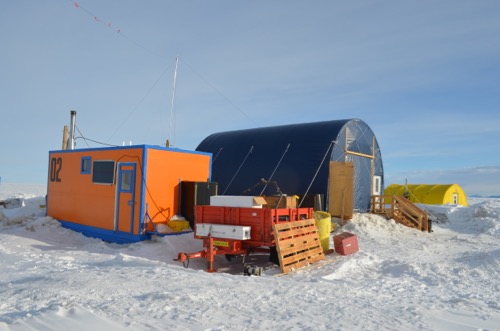
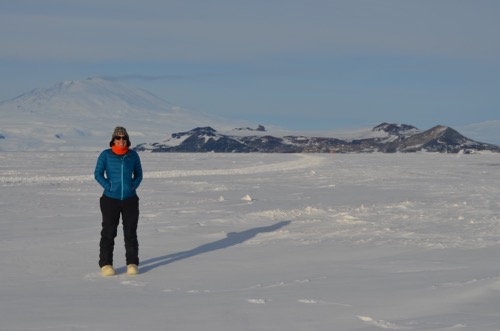
A Big Robot with an Important Job
Artemis is an impressive robot. It weighs 2700 pounds, is about 15 feet long and a little less than 4 feet across.
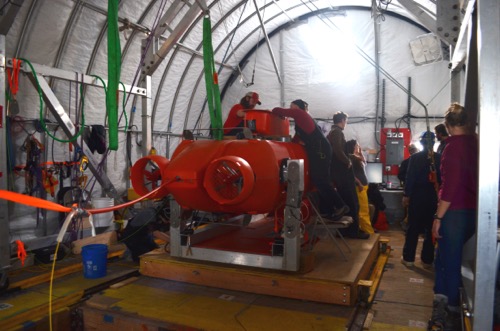
Artemis' mission is more impressive than its size--it is helping scientists test out new developments in robotics to one day understand life in space! Dr. Britney Schmidt, a principal investigator (PI) of the project, is hoping Artemis can lead the way to robots identifying the ice on Jupiter's icy moon, Europa. Although this is a long way off, Artemis may be the first step in getting there--similar to the development of rovers on Mars.
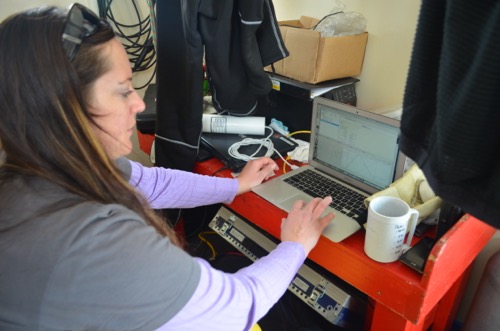
Dr. Schmidt is a professor from Georgia Institute of Technology and is looking at the ice shelf in Antarctica as a proxy for Europa. She believes that the dynamics of the ice shelf and how it interacts with the ocean are similar to the dynamics on Europa. There is so much to learn about the ice, both on Earth and beyond. Artemis can collect data like ice depth and other measurements to help scientists study this.
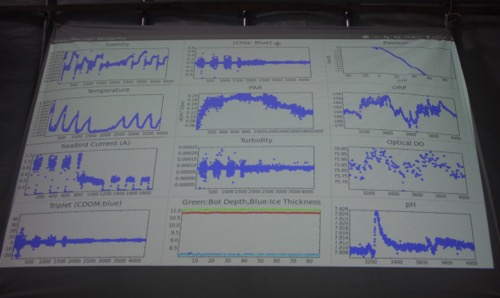
On the Cutting Edge of Robotics
Artemis was designed by Stone Aerospace. The company, headed by Bill Stone, is based out of Texas. For the Artemis project, Stone Aerospace is collaborating with a number of people, including Britney Schmidt and Peter Doran, to collect important data about the ocean and ice shelf. Artemis also has some innovative robotic components that help push the limits of the field. For example, Artemis has a robotic arm that can extend upwards to analyze the sea ice. It has a Protein Fluorescent Spectrometer (PFS) on it, which uses wavelengths to detect specific protein signals. This is useful to better understand life on the sea ice, as well as identify if there is life on Europa.
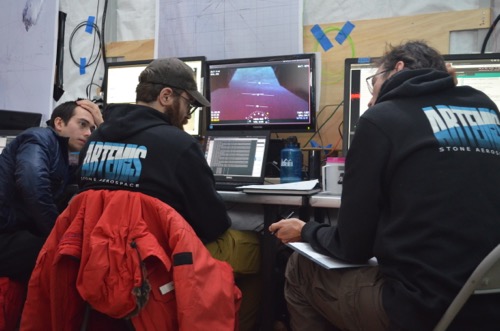
Artemis also tackles a problem that limits most underwater robots: navigation. Since radio waves cannot travel well in water, it is not possible for robots to use GPSA Global Positioning System (GPS) is a satellite-based navigation system used to track the location or position of objects on the Earth’s surface. to track where they are. Artemis is up against an even tougher challenge because it is diving under sea ice. Unlike open-water robots, Artemis has to surface at a very precise dive hole location to be found. Most underwater robots use a technique that has been used by sailors and other navigators in the past called dead reckoning. Dead reckoning measures your speed and direction to calculate where you are. Artemis knows its direction thanks to a gyroscope and can also track its speed. However every time this data is calculated, there is a slight error. Over time those errors can add up and result in a lost robot. The designers of Artemis have come up with some great solutions to counter this. They utilize a beacon which stays in the dive hole. It sends out a signal which a transceiver on the front of Artemis can receive and help find the dive hole. With the beacon is a string of LED lights which Artemis can also recognize with a special camera. Both these systems help ensure Artemis can find its way home under the sea ice.
Science in Action
Today was a very exciting day at the SIMPLE camp because the team let Artemis explore the sea ice without any safety line. I felt like I was in the control room at NASA, watching the robot's systems functioning after being tweaked and improved. However, it was when Artemis lost power and stopped unexpectedly below the sea ice that I felt I was really experiencing science in action. The team responded quickly to assess the power outage and review an already thought-through plan about out how they were going to get Artemis back safely. Once the power went down, the team tracked the time and estimated the direction Artemis was travelling in. Team member Brian went out to the expected location with a machine that can detect a magnetic pulse which Artemis sends out every 30 minutes. Because of the power failure, Artemis only sent out a short magnetic pulse, but the team had calculated the right location and Brian found Artemis! To confirm this, the team drilled a small hole and fed an underwater camera through it. Artemis was spotted close to the location.

Artemis is programmed to hover close to the surface, even if it has no power. This allows it to be easily retrieved. With Artemis' location found, the team called in support to help retrieve the robot. Drilling expert Mel came to the rescue and drilled holes in the sea ice. Rob Robbins and Steve Rupp (who helped us with our research) also helped out by tethering Artemis to ropes so it could be pulled out of the hole. Artemis was carefully placed on the back of a PistenBully and brought back to the camp.

Science is Hard Work!
When I left Team SIMPLE near 1 a.m., most of the team members were preparing to bring Artemis back inside the main tent. Although the robot's power died, there were a lot of successes today. Artemis traveled 1 kilometer on its own with instruments working correctly. Also, the team's systems for finding and retrieving Artemis when something goes wrong proved to work. What impressed me the most about my day with Team SIMPLE was how dedicated and enthusiastic the team was about solving problems and making Artemis work. Artemis represents a push forward in underwater robotics. Advances like this do not come easily, as can be seen by the long, cold hours team SIMPLE works. While I was helping out SIMPLE, scientists all across Antarctica were working to better understand the world around them. My research team, for example, was hiking for miles across the Dry Valley to monitor and better understand human impacts there. Science is important and adventurous, and it is hard work.
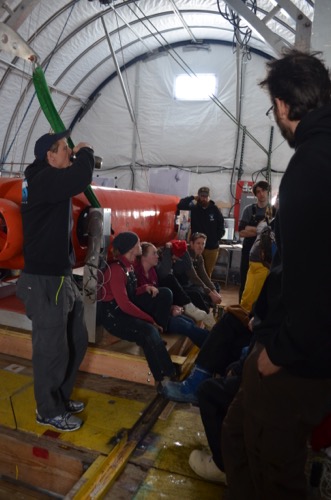
Ice POD
Today we learned about Team SIMPLE's robot, Artemis. Artemis was designed to understand the dynamics of the ice in Antarctica, and potentially Jupiter's frozen moon, Europa. What instruments and data would you expect Artemis to have? Post your answer in the "Ask the Team" section. You can download a PowerPoint slide of this Ice POD here: 20_icepod.pptx
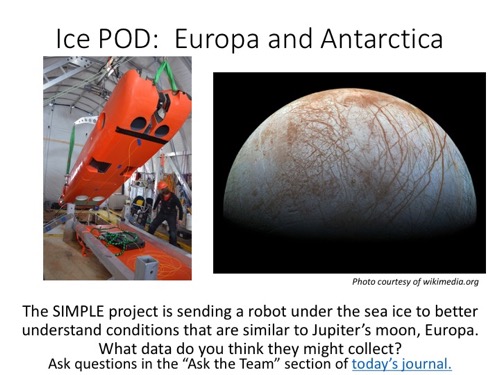
Brought to you by...
Today's journal is brought to you by Ms. Raugh's class at Pioneers School in Pennyslvania.

| Attachment | Size |
|---|---|
| 20_icepod.pptx403.74 KB | 403.74 KB |

Comments